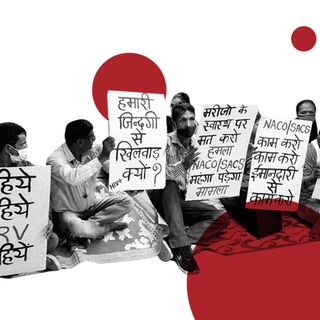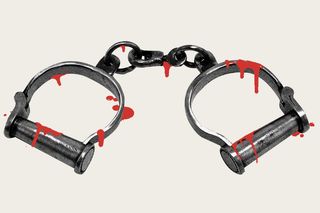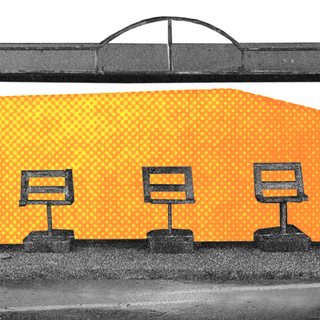
4,484 People Died in Police Custody Since 2020: Govt Data
The data shared in the Lok Sabha once again shows how custodial violence allows the state to silence people marginalised by class, caste, and religion.

To what extent can impunity and oppression be quantified? An answer can be found in the chambers of theLok Sabha, where the Union government on Tuesday shared data on the rise of custodial deaths in India. At least 4,484 people died in police custody over the last two years, with the state of Uttar Pradesh recording the highest share of custodial deaths. Overall, India’s documented custodial violence has steadily increased, with there being at least 2,544 cases in the last year itself.
The data was presented by Union Minister of State for Home Affairs Nityanand Rai in response to a question by Indian Union Muslim League Minister of Parliament Abdussamad Samadani.
These numbers are conservative estimates of the degree of violence and torture that forms the rot in incarceration in India. Versions of this reality have been documented in different ways: at least 90 people die in police custody annually, which means at least one person dies in police custody every five days, as per a 2019 report. In April, a 25-year-old man was arrested in Chennai for possession of marijuana, and died the next day; experts alleged it was a case of custodial torture. In June last year, Ambadipudi Mariyamma, a 40-year-old woman from the Mala caste, was arrested in a robbery case and later died allegedly due to custodial torture. Activist Stan Swamy who defended the rights of marginalized groupsdied in custody last year; with many calling it a “custodial murder” and pointing out the “inhuman treatment” he was subjected to.
Specific individual deaths when enumerated tell a morbid tale of how power intersects with caste, class, and religious exploitation — and how people continue to valorize these displays of oppression. It also speaks to the consequences of leaving state-sanctioned forms of violence unchecked, calling for a reevaluation of our justice system and the arm of the law itself.
It is important to note who is the subject of incarceration too; reports have increasingly shown it is people from Scheduled Castes, Scheduled Tribes, Other Backward castes, and Muslim communities are more likely to be arrested and kept in custody.
The current iteration of this wilful neglect tells us two things. One, the systems of punishment betray the degree to which stateviolence is normalized and used as a tool of silencing. “The high incidence of death in custody demonstrates complete acceptance of violence as the universal first response used in investigations at police stations,” said Maja Daruwala, chief editor of the India Justice Report and adviser to the Commonwealth Human Rights Initiative. “It also signals acceptance of illegality and impunity within the force by those with the responsibility of supervising the force.” Other rights groups have noted that torture remains a routine practice in police interrogations, and deaths become an “unintentional consequence” in many cases.
Related on The Swaddle:
Telangana HC Orders Inquiry into Dalit Woman’s Death in Police Custody
The method of torture remains unscrutinized because of the cultural misconception around prisons holding “bad people”; “it is okay to treat bad people badly,” the social conscience mistakenly remains. There is impunity and incompetence too (if custodial violence has no consequences, it becomes the preferred way for police officials to resort to these methods over the long-drawn process of investigation. Saumya Dadoo, the founding editor of Detention Solidarity Network, also told The Swaddle: “it’s important to note that prisons are also patriarchal institutions — this is not to say that it is only men who abuse their power — it means that prison spaces embody aggressive masculinity which leads to violent behavior.” Between 2001 and 2020, at least 1,888 custodial deaths were reported in India; out of the 893 cases registered against police personnel, only 26 policemen were convicted during the period, according to the National Crime Records Bureau’s data.
Two, and more worryingly, it shows how neglect and wilful incarceration conspire to result in needless deaths — a landscape where the easiest way to dehumanize people marginalized by class, caste, and religion comes through violence and torture. In these spaces of confinement, the power dynamic between people who hold state authority and those arrested on spurious grounds allows for human rights violations.
India’s Supreme Court has described custodial deaths as “one of the worst crimes in a civilized society governed by rule of law,” reiterating the need to address the menacing persistence of state violence behind bars. The court did take note of the macabre reality, and in a landmark judgment in 2015 directed police stations to install CCTV cameras, but the implementation has proven wanting as many defy court orders. In many cases, custodial deaths lack evidence of torture, with police officials citing “disappearances” of CCTV footage, warrants, memos, diary entry, interrogation records, recoveries.
Daddoo noted the need to distinguish between abuse that happens due to the system itself, and abuse that draws from oppressing the person’s identity. “The criminal justice system targeted towards certain communities – namely poor people, people who are Dalit, Bahujan, and Adivasi, and like all of society, is also disproportionately violent towards women, gender minorities, and people with disabilities. In other words, prisons reproduce many of the forms of oppression and dehumanization of certain groups that we see in society that would be understood as human rights violations and because of the lack of impunity endemic to such spaces, these violations are part of the culture of these spaces,” she said.
The recent data once again bolsters concerns human rights activists raise: that India, despite a consistent rise and cases in custodial deaths, still hasn’t criminalized custodial violence. “Custodial deaths should be considered murders unless proven otherwise. But for that to happen, we Indians must stop being proud of murderous cops (sic),” noted author Kavita Krishnan.
Saumya Kalia is an Associate Editor at The Swaddle. Her journalism and writing explore issues of social justice, digital sub-cultures, media ecosystem, literature, and memory as they cut across socio-cultural periods. You can reach her at @Saumya_Kalia.
Related


A Bus Stop Bench in Kerala Was Cut to Prevent Men and Women From Sitting Together
